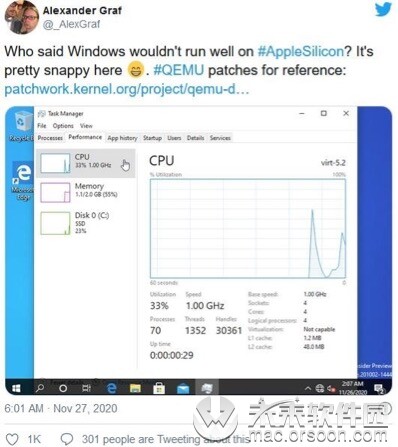

Diablo2 for example under Crossover runs wicked, no prob.Īll this is on my M1 MacBook Air, running Big Sur. I wasn't able to get either of those to run P1999, but I did have success w/ Crossover running a few other games, just as a test/proof of concept. That all being said, I also tried Wine, and even bought Crossover. Anecdotally, it appears running Parallels isn't using a ton of CPU, nor is it draining my battery in any absurd way. The above code is: Installing QEMU as x86 Create disk image (2G 2GB) Run QEMU with newly created image and report as Mac using OpenBIOS, boot of the D drive (Optical), 512 MB of RAM and also include the disk image. Also, I was worried about the battery drain of running a full VM vs using wine/crossover, but it's not bad. For that price, it was worth giving it a shot.I fired up Paralells, and (hyperbolically) in three clicks I had my program working flawlessly. But all of it, including Parallels was only $25USD. Parallels, some vpn software, and three other titles I'll never use. I normally wouldn't have spent money on Parallels, but I got a promo email from Boingboing of all places, and it was the last day of some multi-app bundle package they were selling. But Win10 itself ran, and was fully functional. Models not rendering, and too much screen tearing to be useful. On UTM's GitHub page some users are reporting various QEMU tweaks that enable faster performance for win10(ARM) that UTM hasn't implanted yet.My goal has been to run a version of Everquest called Project1999.It took me weeks to get it (P1999) working under UTM. You may need to treat your QEMU configuration and your OS X install into it like a Hackintosh to get it to work.I'm running both extensively.UTM being just a front end for QEMU, means it's a nice(free) way to get up and running quick. HOWEVER, you need to make sure that QEMU has the right hardware configured in it to support a macOS guest - apple generally doesn’t like people running virtualized OS X much. One problem folks have understanding how all these different things work, I think, is a vocabulary one - the kind of multiprocessor fat binaries, like Rosetta uses, is a completely different technology than a VM using CPU virtualization features, like VMWare or VirtualBox use, or a VM which can simulate the entire computer hardware stack in software, which is what QEMU generally does. UTM frontend for QEMU for M1 Apple Silicon: Installing Windows 95 QEMU is an emulator.

This is also how you use it to simulate ARM processors while the host is x86. Running Mac OS 9 and Mac OS X 10.0 - 10.4 on Apple Silicon (M1) & Intel via QEMU The info this guide is valid but I written a new one about QEMU screamer which emulates Mac OS 9 - OS X 10.14 with sound. Running and benchmarking Windows 10 in M1 Mac using ACVM (QEMU).

QEMU, while it can take advantage of CPU virtualization, can also just use the slow option: it can just simulate a CPU completely. Yes, if you use QEMU, you should be able to run any x86-based OS, like Leopard, Mojave, or any other x86 MacOS release.


 0 kommentar(er)
0 kommentar(er)
